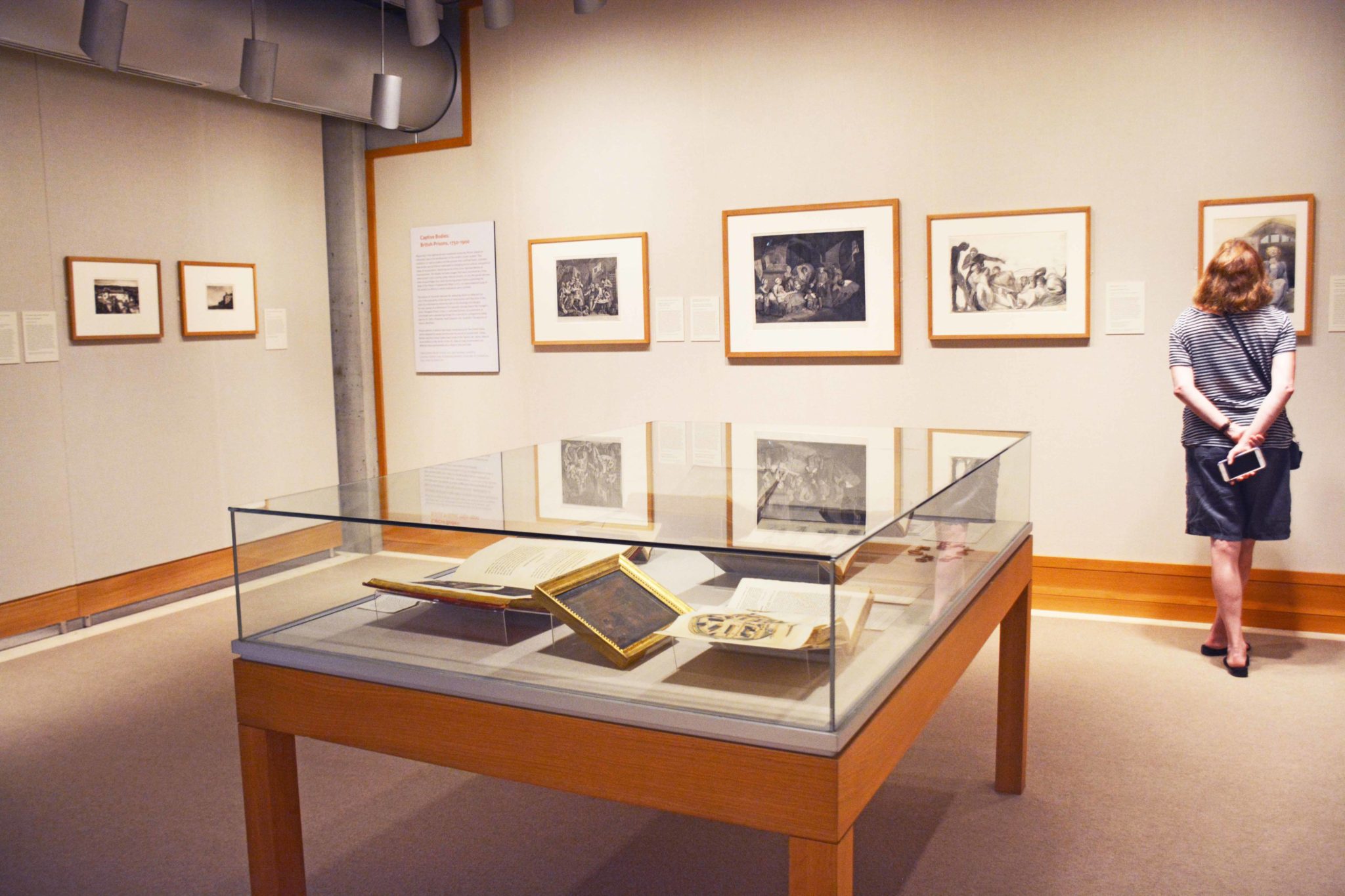
In a second-floor gallery space of the Yale Center for British Art, about 25 objects come together to form an exhibition that its curator, Courtney Skipton Long, hopes will become a new “think tank” or “thought space” on campus.
The exhibition, titled “Captive Bodies: British Prisons, 1750–1900,” opened on Aug. 28. For the exhibition, Long, a postdoctoral research associate in art collections at the YCBA, assembled objects from the YCBA’s collection that depict prisons and imprisonment. The exhibition features a wide range of media, including paintings, rare books and works on paper, such as prints, drawings, and watercolors.
“The exhibition takes the history of the representation of incarceration through the Center’s collection and puts it on view,” Long said. “That is something I am excited to have viewers experience — it is a very relevant topic at the moment, investigated through a historical context.”
Long’s exhibition explores the years between 1750 and 1900, which she said is a period of strength in the Paul Mellon Collection, which constitutes the largest and most comprehensive collection of British art outside the United Kingdom.
Long noted that while many exhibitions elsewhere address incarceration through the work of contemporary artists, “Captive Bodies” emphasizes the historical basis for today’s systems of incarceration.
Long added that in many ways, the modern prison system is derived from British practices during the time period that the exhibit explores.
“It’s important to know that many of these issues have a history — that this history has long-standing roots,” Long said.
“‘Captive Bodies’ is the first in a series of focused exhibitions that draws on the center’s permanent collection to address contemporary issues relevant to many departments across our campus,” said Matthew Hargraves, chief curator of art collections at the YCBA. “What makes ‘Captive Bodies’ such an exciting show is the way that Dr. Long has selected objects from across the various departments at the center, including both familiar things as well as some never exhibited before.”
Hargraves added that “the paintings, rare books and manuscripts, photographs and prints and drawings make a powerful impact and reveal how much our current practices of incarceration are conditioned by the past.”
In order to begin selecting objects for the exhibition, Long searched the YCBA’s collections using an online database to find all objects associated with prisons. Next, Long narrowed the extensive list of objects that the search yielded into the smaller grouping of objects currently on view based on the space available on the walls and in the case that sits in the center of the exhibition.
Long said that she worked to arrange the objects she selected in a way that would make the viewer feel comfortable in the exhibition space.
“Because this is potentially a heavy topic for the viewer, I tried to give attention to the arrangement of the exhibit so one could feel comfortable to engage with those objects,” Long said.
She noted that one curatorial choice she made to welcome the viewer into the exhibition was to place the introductory wall text straight ahead on the far wall rather than immediately to the viewer’s left when entering the space.
Long said her training as a painter informs her approach to curation.
“I think of an exhibition space much like I think of a canvas of a painting: There’s a composition to it and there’s a narrative, and ideally, you want the viewer to feel comfortable in the space,” Long said. “Curation is as much about the subject of the objects as it is about the way they are arranged on the walls.”
In the exhibition, Long paired two representations of John Howard, an 18th-century British penal reformer, freeing a family from imprisonment. One image shows Howard speaking with a jailor, who is depicted handing cell keys to Howard to free the prisoners. This gesture signals that the jailor agrees with Howard and believes the family’s imprisonment is unjust. A second image of the same subject by George Romney hangs beside the first. Long characterized this second depiction as “frenzied,” emphasizing the reformer’s pleading with the jailor.
This pairing of works on paper is further developed through the presence of a set of prison keys in a nearby case — keys just like those that the jailor hands to Howard in the first image. According to Long, such pairings emphasize the fact that the imprisonment depicted in the images on the exhibition’s walls involved “real people and real experiences.”
Long said that together with a copy of Howard’s 1777 book describing the poor conditions he witnessed in prisons across England and Wales, these objects tell an important story about prison reform in the late 18th century.
The exhibition also features a guest book that Long introduced as a space for viewers to reflect on their experiences viewing “Captive Bodies.”
Long said that the guest book is already filled with “thought-provoking comments about [the viewers’] understanding of the present moment and how this exhibition calls attention to that.”
One anonymous response in the book reads, “Stories and images of the past cruelties and unfairness that laid the foundations for the brutal prison/incarceration, or so-called ‘justice’ system we have today are incredibly important and need to be shared if we want to make things better now and in the future.”
The exhibition will continue until Nov. 25, 2018.
Julia Carabatsos | julia.carabatsos@yale.edu







